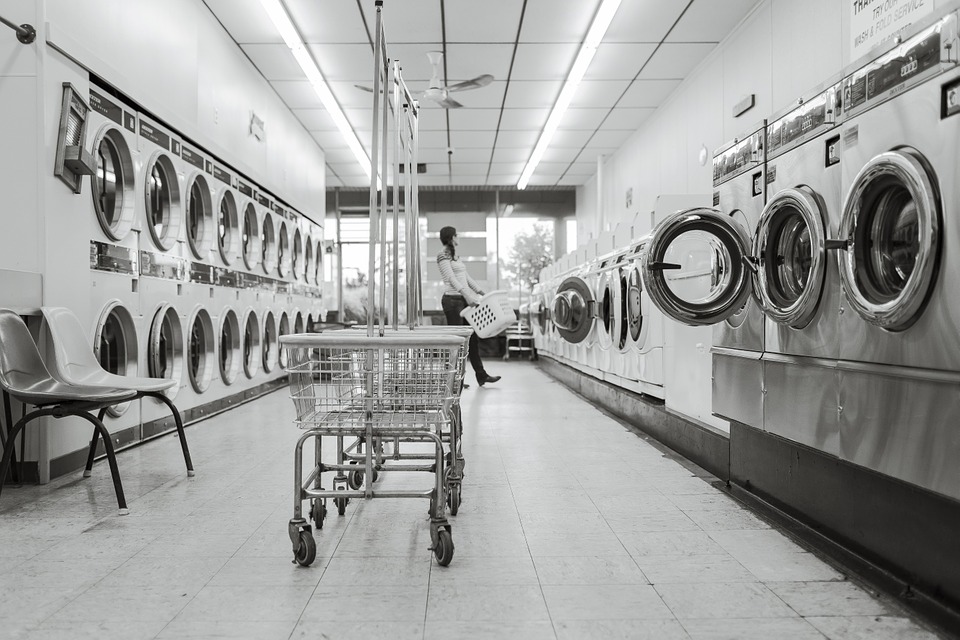Microfibers and microplastics constitute a growing issue in water contamination, and washing clothes may contribute to the problem.
By Hoang-Nam Vu, Staff Writer for Save the Water™ | March 13, 2017
If there is one thing teenagers seem less than inclined to do, it’s doing the laundry. Akin to washing the dishes or other commonplace household tasks, the use of a washing machine is, for many young adolescents, far from effortless. Thanks to a recent study, however, they may just have a point.
Microscopic fibers may be the most pernicious microplastic. A study from Plymouth University found that “more than 700,000 microscopic fibres could be released into wastewater during each use of a domestic washing machine, with many of them likely to pass through sewage treatment and into the environment”.4 These microscopic fibers are known as “microfibers” and many are synthetic.3 Despite their pervasiveness, not much is known about microfibers yet. While this discovery about microfibers is somewhat new, microfibers contribute to the prevalence of microplastics. Some studies identify microfibers as the dominant microplastic.1, 3
What are microplastics?
Microplastics are exactly what they sound like: extremely small pieces of plastic often found in health and beauty products, as well as in marine environments. Microplastics can be synthesized or can arise from the degradation of larger plastic products, such as water bottles.1
The most prominent and distinguishing trait of microplastics including microfibers is the size.1 Because of their minuscule size, microplastics can pass through spaces in conventional water filtration systems, leaving the supposedly-clean water polluted.4 Additionally, since microplastics are so small, it is difficult to track and to address them sufficiently, unlike other forms of water pollution that have easily perceptible symptoms, like eutrophication and oil sheens.5 In fact, relatively little is known about the exact source of microplastics and how we can address them.1 But studies are pointing to microfibers.
Microfibers from clothes
The Plymouth University study about microfibers “washed various fabrics under different conditions and extracted the fibers from the waste effluent. The fibers were then examined using an electron microscope”.4 In addition to the concentration of microfibers found in the effluent, the study found that “the addition of bio-detergents or conditioners tended to release more fibers”.4 Although the Plymouth University study is the most recent, earlier studies also linked microfiber pollution to washing clothes. For example, in 2016, a study by researchers at the University of California at Santa Barbara found that synthetic fleece jackets release about 1.7 grams of microfibers per wash. In addition, that study found that older fleeces shed nearly twice as many fibers as new jackets.3
Negative effects of microplastics
While research about microfibers is recent but growing, microplastics have the capacity to adversely affect marine organisms if left in aquatic environments for extended periods of time. It is likely that marine animal’s tissues and cells can store microplastics and microfibers, making it easier for certain contaminants called hydrophobic organic contaminants that depend on bioavailability and sorption to determine their environmental impacts to accumulate inside the marine animals, “with probable negative consequences for health”.1 This indicates that the accumulation of microplastics in aquatic environments could lead to an increase in the concentration of contaminants in the bodies of marine organisms and a decrease in biodiversity.
The same groundbreaking study linked the abundance of microplastics on 18 shorelines spanning six continents to washing clothes. Specifically, among other points, the study concluded that an “important source of microplastic appears to be through sewage contaminated by fibers from washing clothes”.1 In addition to oceans, microfibers have also been found in freshwater, including the Great Lakes.3 This illustrates that microfibers taint the potentially recyclable water.
Pollution prevention
Despite the relatively recent emergence of microplastics as a principal issue in water contamination, there have already been measures taken to alleviate the effects of microfibers. The European organization Mermaids has begun to develop a more cohesive washing machine filter not only aimed at “preventing the buildup of microfibers in septic tanks but also at preventing the discharge of contaminated water into wastewater systems”.2 This technology can be used to make other filtration systems more effective, leading not only to limiting the discharge of microfibers and microplastics but also reducing common pollutants generally.
Some other possible solutions to this microfiber contamination problem are waterless washing machines, better quality clothes, clothes treated with an anti-shedding treatment, a nanoball that attracts and captures microfibers, a home-filter on washing machines. These solutions, however, require industry support that does not yet exist.3
Of course, this in no way should disincentivize using a washing machine: it’s simply a part of life. Even researchers from the aforementioned Plymouth University study assured everyone that they were “not advocating that this research should trigger something similar to the recently announced ban on microbeads”.4 Rather, they suggested that “voluntary or policy intervention should be directed toward reducing [microfiber] emissions either via changes in textile design or filtration of effluent, or both”.4 To conclude, it should be recognized that with every wash using a conventional machine, hundreds of thousands of microfibers are potentially released into the wastewater system. Microfibers and microplastics constitute a problem that needs to be addressed. Save the Water is working to detect water contaminants.
References
- Browne, M. A., Crump, P., Niven, S. J., Teuten, E., Tonkin, A., Galloway, T., & Thompson, R. (2011). Accumulation of Microplastic on Shorelines Woldwide: Sources and Sinks. Environmental Science & Technology, 45(21), 175-179. doi:10.1021/es201811s
- Mermaids. (n.d.). Technologies. Retrieved from http://life-mermaids.eu/en/research/technologies/
- Messinger, L. (2016, June 20). How your clothes are poisoning our oceans and food supply. theguardian. Retrieved from https://www.theguardian.com/environment/2016/jun/20/microfibers-plastic-pollution-oceans-patagonia-synthetic-clothes-microbeads
- Plymouth University. (2016, October 3). Washing clothes releases thousands of microplastic particles into environment. ScienceDaily. Retrieved from www.sciencedaily.com/releases/2016/10/161003103651.htm
- Vu, H. (2017, January 28). Plastic pollution in Great Lakes just one example of nonpoint source pollution. Save the Water. Retrieved from https://savethewater.org/2017/03/02/plastic-pollution-great-lakes-nonpoint-source/.





